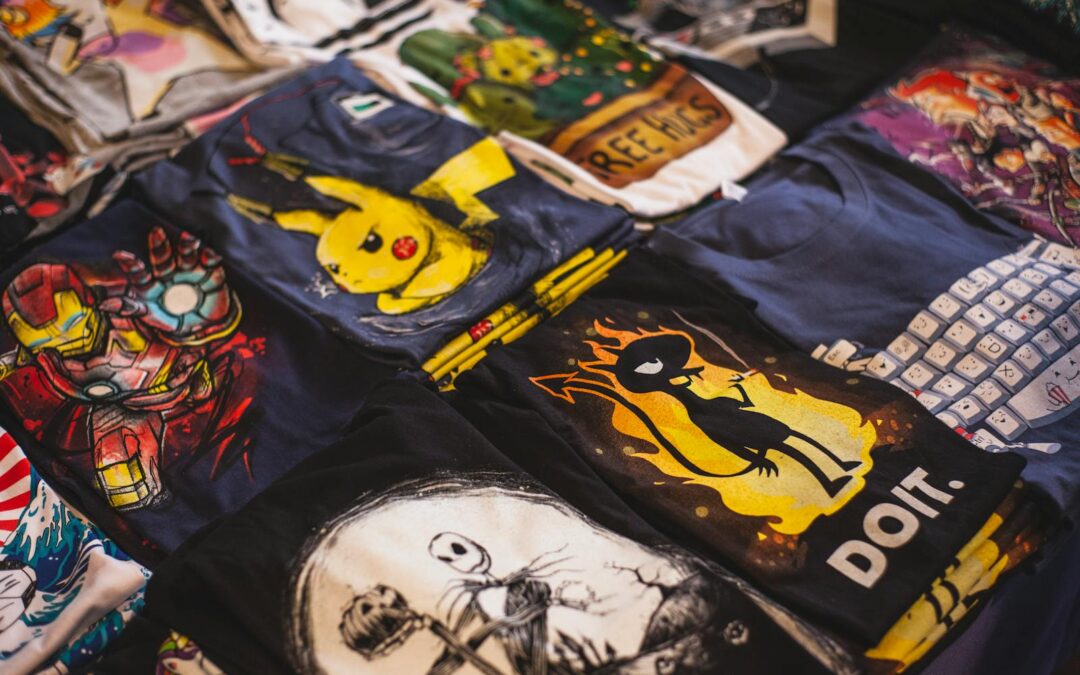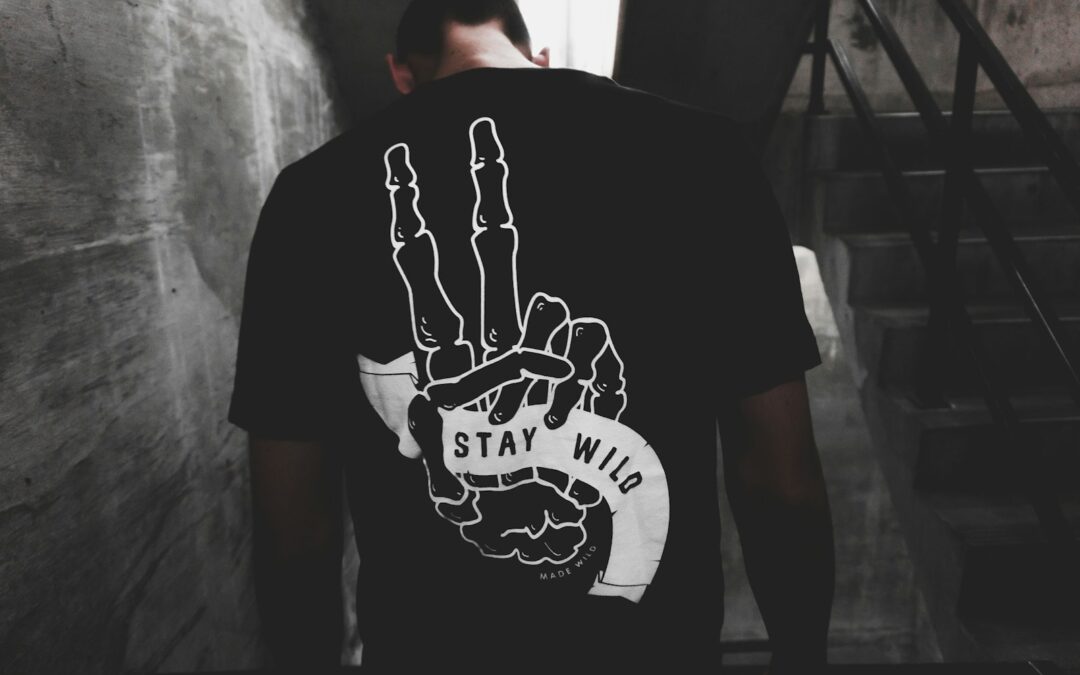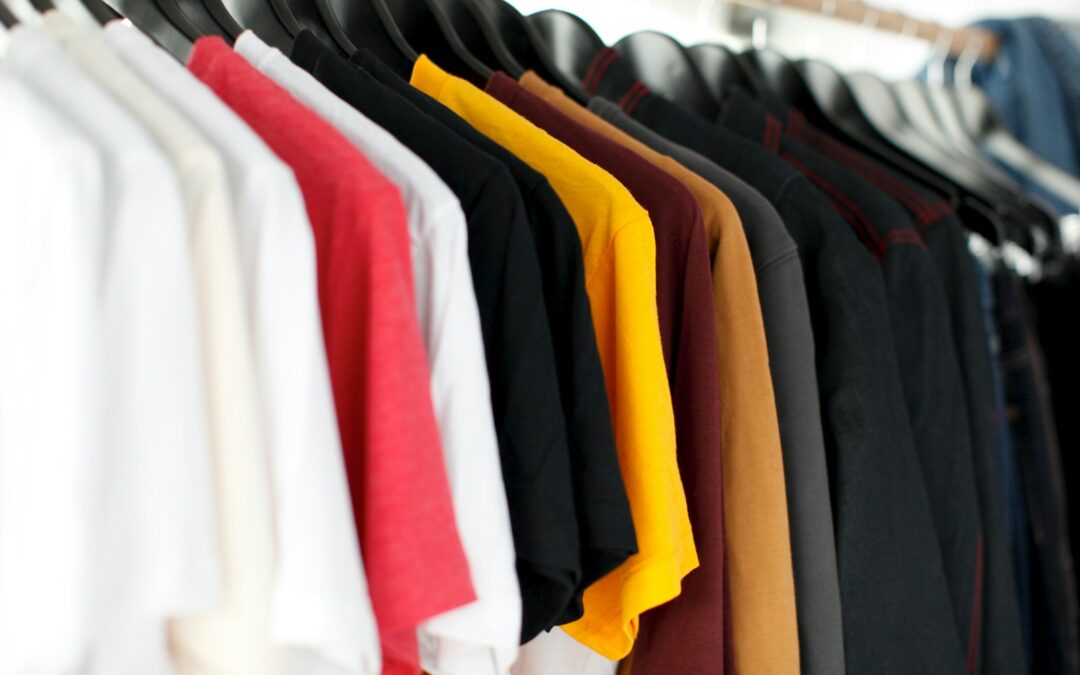Direct-to-Film (DTF) transfers have revolutionized the world of custom design and printing. But did you know they can also be transformed into custom transfer stickers? For small businesses looking for cost-effective, high-quality, and versatile options for branding and customer engagement, this approach combines innovation with practicality.
Whether you’re creating promotional stickers, branded decals, or unique decorations, turning DTF transfers into custom transfer stickers can give your business a competitive edge.
This guide will not only introduce you to the concept of DTF transfers and their versatility but also walk you through the process of creating transfer stickers using this cutting-edge technology. Plus, we’ll showcase expert tips and real-life use cases to inspire your next project.
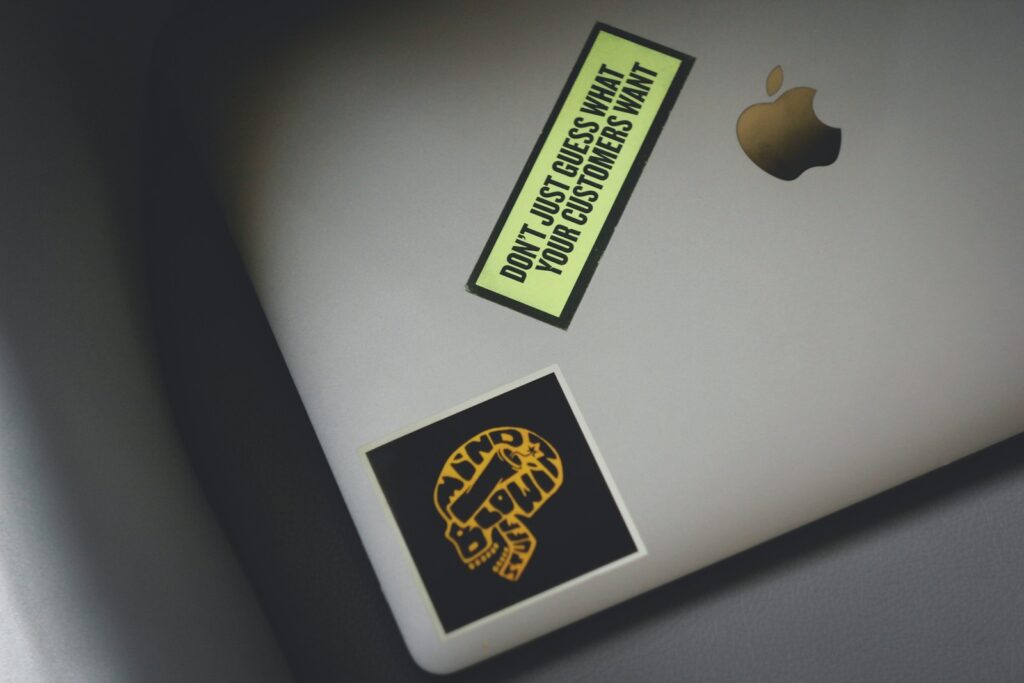
What Are DTF Transfers and Vinyl Transfer Stickers?
DTF transfers are a printing method where a design is printed directly onto a special transfer film and then heat-pressed onto the desired material. They are most commonly used for apparel but are flexible enough to be applied to a wide range of surfaces, like glass, wood, and even leather without a vinyl background material being needed.
Custom transfer stickers, on the other hand, are adhesive-backed personalized designs that can be applied easily to various surfaces like laptops, water bottles, or car windows, usually with a vinyl backing.
These stickers can adhere to smooth surfaces like glass, laptops, and car windows. By converting DTF transfers into stickers, you can create vibrant, durable items that cater to your branding or artistic needs. These are the custom stickers consisting of removable material that you’ve been looking for!
Combining these two technologies opens up endless possibilities for businesses. It allows small business owners to achieve great quality, precise designs, and affordability—all at the same time.

From Design to Application: The Process
Creating custom transfer stickers using DTF transfers involves five straightforward steps. Here’s how the process works:
1. Prepare Your Design
Start by creating your design using a vector file format, such as an EPS or PDF file, for top-notch precision. Tools like Adobe Illustrator or Canva are excellent for creating designs.
If you don’t have design expertise, platforms such as Limitless Transfers offer easy solutions through their design tool, where you can build and upload your custom sticker designs.
2. Print Using DTF Technology
Once your design is ready, output it using a high-quality DTF printer. The design is printed on a special transfer tape with vibrant colors (thanks to CMYK+W printing technology).
Limitless Transfers specializes in outstanding color accuracy, so your custom decals look sharp and professional.
3. Cut to Size
After your DTF transfer has been printed, it’s time to cut it into individual stickers. Removing unwanted vinyl material ensures a clean and precise application of the design.
You can use scissors or a cutting machine to ensure your sticker design is cut into the specified shape. Tools like Cricut or Silhouette machines are perfect for creating precisely cut vinyl transfer stickers.
4. Apply the Adhesive Backing
Transform your DTF transfer into a sticker by pairing it with an adhesive backing.
This step converts your transfer into a vinyl sticker that’s ready to be applied to most surfaces, such as glass, laptops, or wood.
5. The Final Application
Simply peel off the paper backing and apply your sticker to the desired surface cleanly. This can include car windows, water bottles, notebooks, or other promotional products.
With these steps, any business can start creating and using custom transfer stickers to enhance customer interaction and brand visibility.
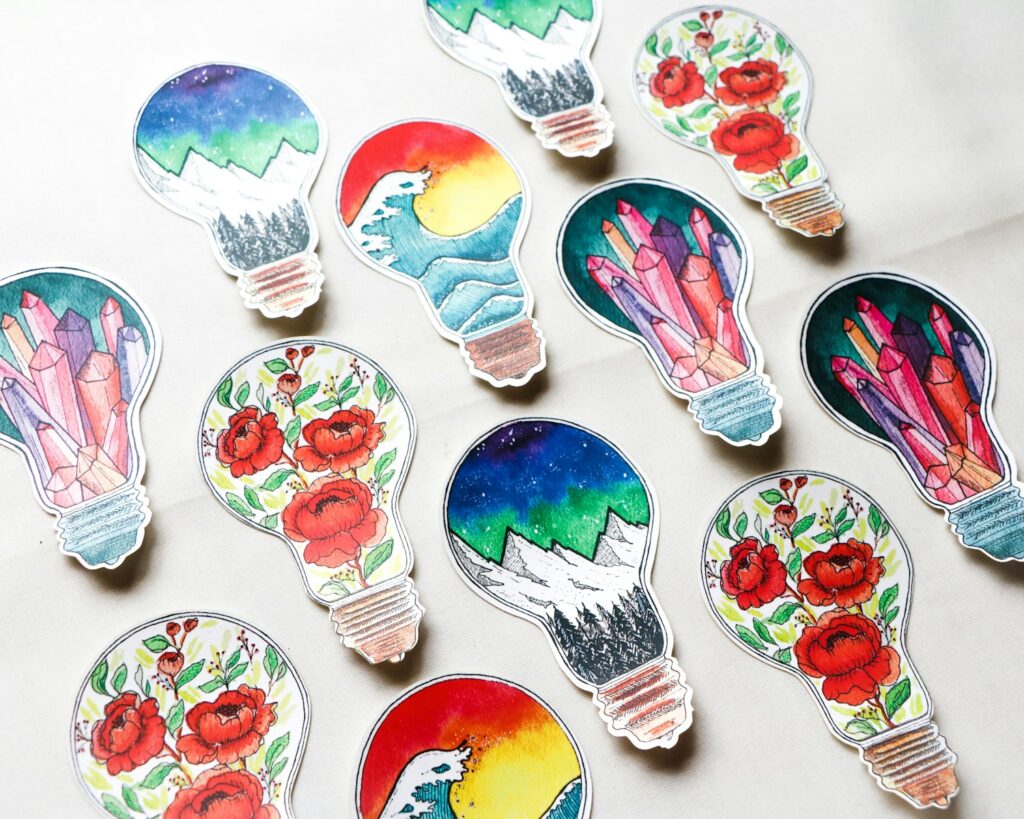
Choosing the Right Material
When it comes to choosing the right material for your transfer stickers, several factors come into play. The type of material you select will depend on the intended use of the sticker, the surface it will be applied to, and the desired level of durability.
Vinyl sticker material is a popular choice for transfer stickers due to its durability and water resistance. This material can be cut into custom shapes and sizes, making it versatile for various applications. Vinyl decals are available in a range of colors and finishes, including glossy, matte, and even holographic, allowing you to achieve the exact look you want.
For indoor applications, a removable vinyl material might be the best option. This type of material is easy to apply and remove without leaving any residue behind, making it perfect for temporary uses or surfaces that you might want to change frequently.
On the other hand, for outdoor applications, a permanent vinyl material is often the better choice. Designed to withstand the elements, this type of material can last for several years, making it ideal for car windows, outdoor signage, and other long-term uses.
If you’re looking for a more premium option, consider using a vinyl material with a laminate finish. This provides an extra layer of protection against the elements, extending the life of the sticker and ensuring it remains vibrant and intact over time.
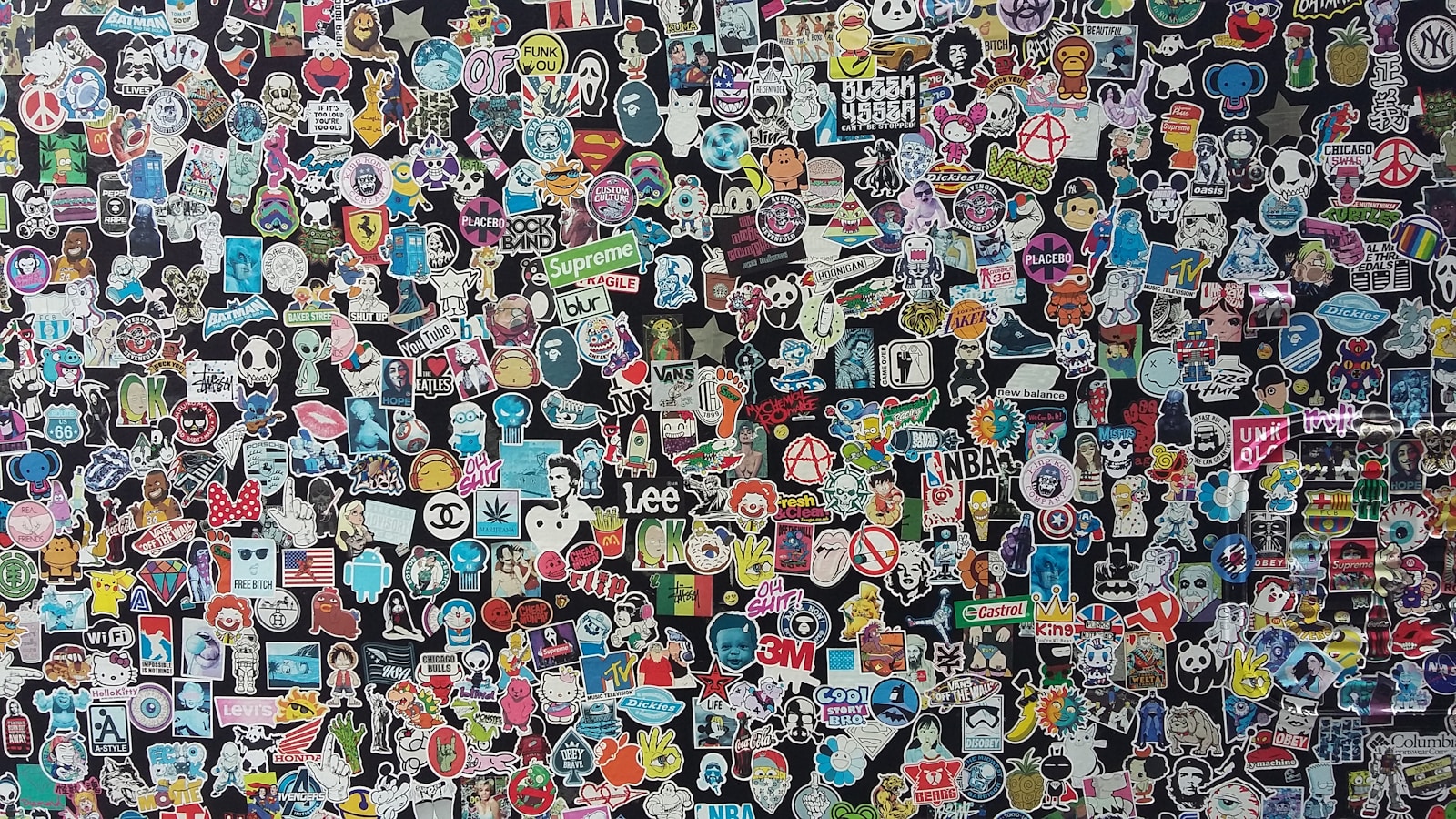
Why Use DTF Transfers Over Traditional Methods?
DTF transfers offer significant advantages over other printing and sticker-making methods. Here’s why they stand out:
High Quality and Durability
DTF transfers produce weather-resistant designs that are vivid, long-lasting, and resilient under various conditions. Whether applied to a T-shirt or a water bottle, they maintain their great quality.
Precision and Versatility
DTF technology allows businesses to create designs with intricate design elements and multiple individual pieces without sacrificing accuracy. This precision is tough to achieve with traditional vinyl printing.
No Limitations on Materials
Whether it’s cotton, nylon, leather, or even wood, DTF transfers can work on virtually any material—a versatility unmatched by traditional vinyl sticker material.
Cost-Effectiveness
Compared to other methods like screen printing or vinyl-cut stickers, DTF transfers are more affordable, especially for small-scale productions. You can create transfer cut stickers with no setup costs and at an affordable price.

Limitless Transfers and Their Unique Offerings
With a brand name like Limitless Transfers, you know you’re dealing with experts. Their hot peel DTF transfers are easy to apply, offer vibrant colors, and work with a wide variety of materials.
Here are some reasons why Limitless Transfers should be your go-to supplier for creating transfer stickers:
- No Minimum Orders: Perfect for small businesses that want to test designs or produce smaller runs.
- Exceptional Quality: Award-winning color accuracy, soft feel, and weather resistance.
- Easy Customization: Their gang sheet builder makes it super easy to create custom designs, even if you don’t have graphic design experience.
Plus, they offer free UPS ground shipping for orders over $50, making them an unbeatable partner for small business owners.
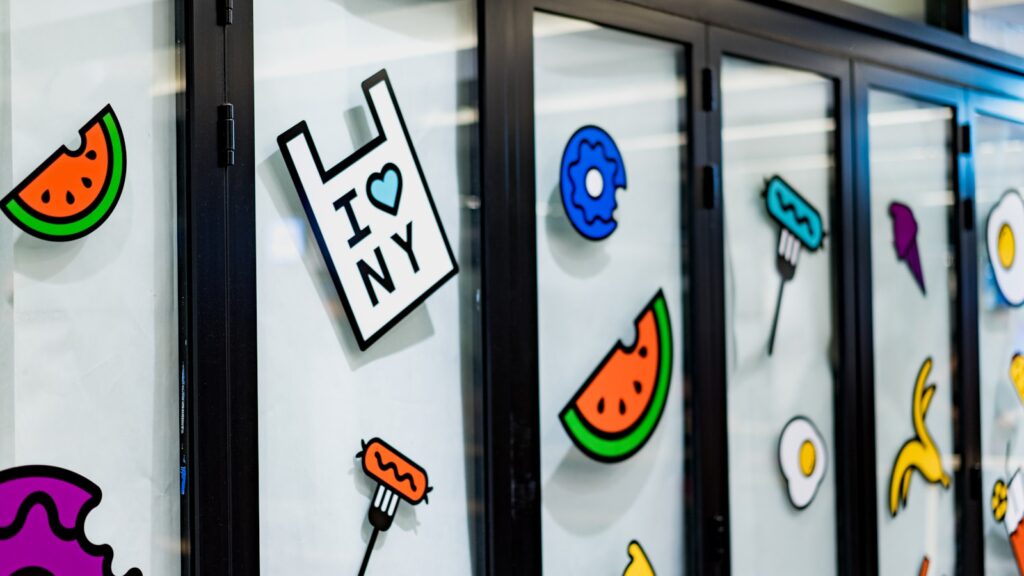
Real-Life Examples of Small Business Success
Local Coffee Shops
A café used DTF transfers to create branded vinyl stickers that customers could stick on water bottles and laptops as a form of advertising. The stickers weren’t just decals—they were a conversation starter and extended their marketing reach far beyond the coffee shop walls.
Etsy Shops
Small crafting businesses on Etsy used DTF transfers to create custom decals and transfer cut stickers for personalized gifts, increasing their sales without the hassle of bulk printing.
Event Planners
An events company created vinyl sticker material featuring a specific logo and design elements for wedding favors. Guests used these stickers on items like notebooks, mugs, and glasses, making the design part of the event’s memory.
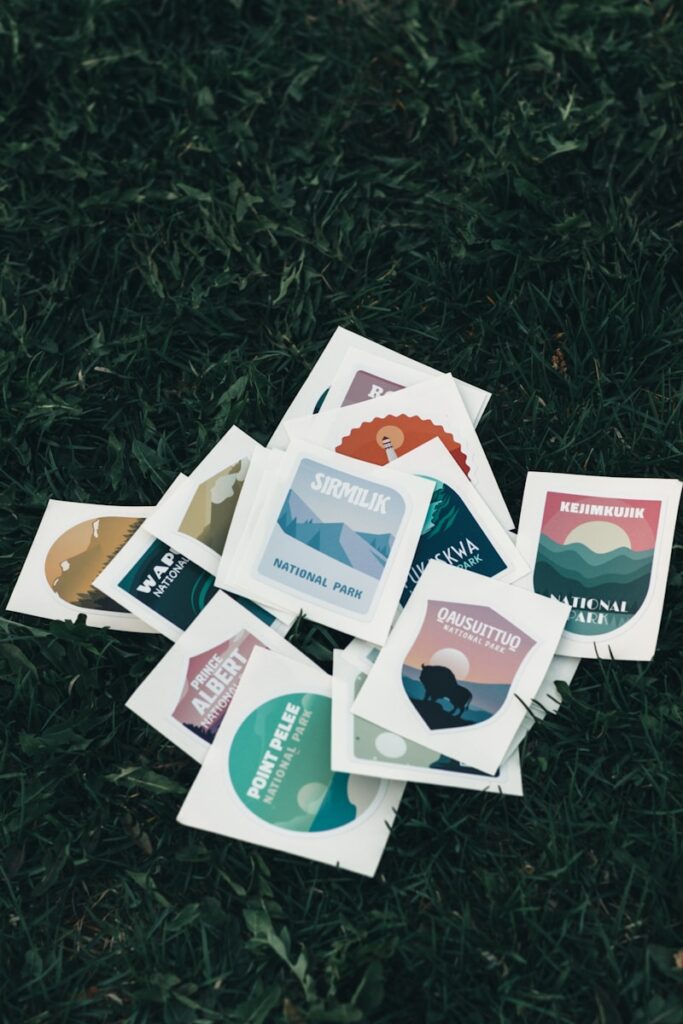
Tips for Designing and Applying Custom Stickers
- Choose the Right Material: Whether you’re creating stickers for outdoor use or items that will encounter frequent handling, select a weather-resistant vinyl background to ensure durability.
- Keep Designs Simple: While DTF transfers can handle intricate design elements, simple designs often look better when translated into stickers.
- Clean the Surface First: Ensure your desired surface is free from dirt or debris to help the sticker adhere properly and remove it cleanly when needed.
- Order a Proof: Before committing to a bulk order, always request a proof to ensure your design looks super easy and polished.
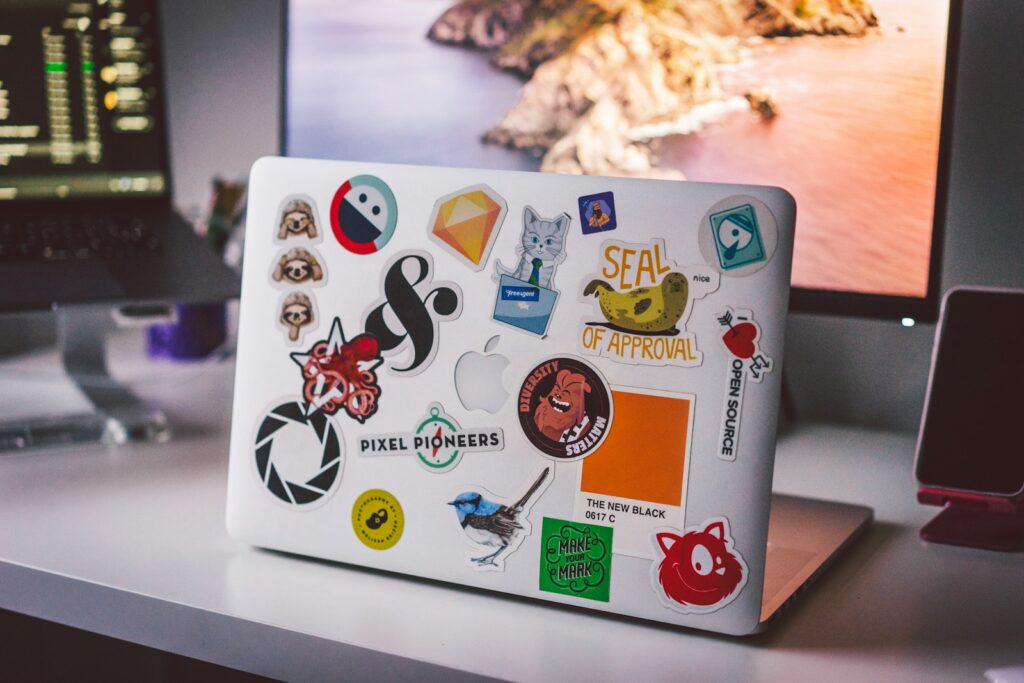
Installation and Care Tips
Installing and caring for your transfer stickers is straightforward, but a few tips can help ensure the best results:
- Surface Preparation: Before applying the sticker, make sure the surface is clean and dry. This ensures a strong bond between the sticker and the surface. Use a mild cleaner to remove any dirt, dust, or oils.
- Application Technique: Use a credit card or a similar tool to smooth out any air bubbles that may form during application. Start from the center and work your way outwards to ensure a smooth finish.
- Environmental Conditions: Avoid applying the sticker in direct sunlight or extreme temperatures, as this can affect the adhesive and the application process.
- Removal: To remove the sticker, use a gentle adhesive remover or a mixture of soap and water. Avoid harsh chemicals or abrasive materials that can damage the surface.
- Longevity: To extend the life of the sticker, avoid exposing it to extreme temperatures, direct sunlight, or harsh chemicals. This will help maintain its appearance and adhesion over time.
Troubleshooting Common Issues
If you encounter any issues with your transfer stickers, here are a few troubleshooting tips to keep in mind:
- Poor Adhesion: If the sticker is not sticking to the surface, ensure the surface is clean and dry. Also, make sure the sticker is applied at room temperature for optimal adhesion.
- Peeling: If the sticker is peeling off the surface, check that the surface is smooth and even. Applying the sticker with the correct amount of pressure can also help prevent peeling.
- Bubbling or Wrinkling: If the sticker is bubbling or wrinkling, ensure the surface is clean and dry before application. Use a tool to smooth out the sticker from the center outward to remove any air bubbles.
- Fading or Discoloration: If the sticker is fading or discoloring, it may be exposed to direct sunlight or harsh chemicals. Consider using a laminate finish for added protection against the elements.
By following these tips and troubleshooting steps, you can ensure your transfer stickers look great and last as long as possible.
DTF Transfer and Transfer Stickers Resources
Expand your knowledge and find the tools you need with these helpful resources on DTF transfers and transfer stickers:
- What Are DTF Transfers?: A comprehensive guide on how DTF transfers work and why they are a popular choice for creating custom designs.
- How to Apply DTF Transfers: Step-by-step instructions for applying DTF transfers to achieve professional results.
- Transfer Stickers vs. DTF Transfers: A resource comparing the key differences and advantages of transfer stickers and DTF transfers.
- DTF Transfer Design Tips: Tips and tricks for creating intricate and vibrant designs optimized for DTF transfers.
- Shop Transfer Stickers and Supplies: Explore a variety of high-quality transfer stickers and materials designed for different applications.
- Caring for DTF Transfer Designs: A detailed guide on washing and maintaining garments with DTF transfer designs to ensure their longevity.
- How to Apply DTF Transfers: Step-by-step instructions on properly applying DTF transfers for best results.
Leverage these resources to maximize the potential of your custom design projects, ensuring stunning and durable results every time!
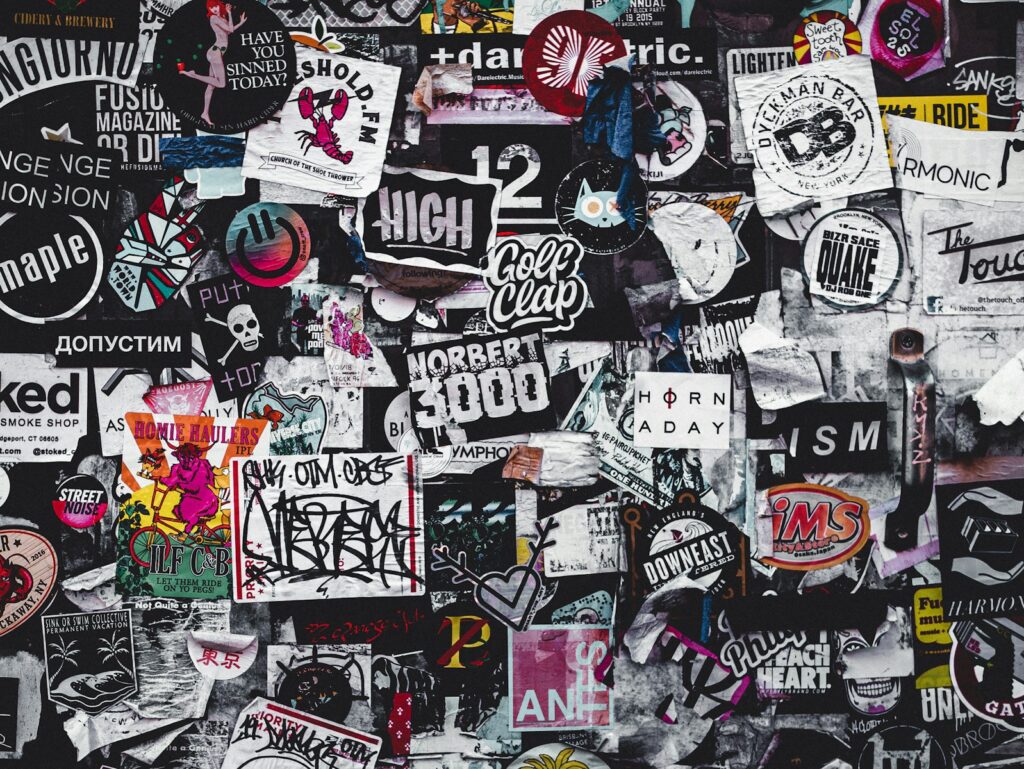
Fuel Your Creativity with Custom Transfer Stickers
The future of custom design is here, and it’s exciting! By turning DTF transfers into custom transfer stickers, businesses can add new dimensions to their branding, merchandise, and customer engagement at an affordable price.
Whether you’re creating clear vinyl decals for laptops, cut vinyl decals for storefronts, or pre-masked transfer decals for events, the possibilities are endless. Use your custom cute company logo and turn that decal design into the perfect design.
If you’re ready to get started, consider partnering with a leader in the space—like Limitless Transfers. Their expertise, tools, and high-quality materials make it easier than ever to bring your sticker ideas to life.
Experiment, create, and empower your brand with DTF transfers today!


